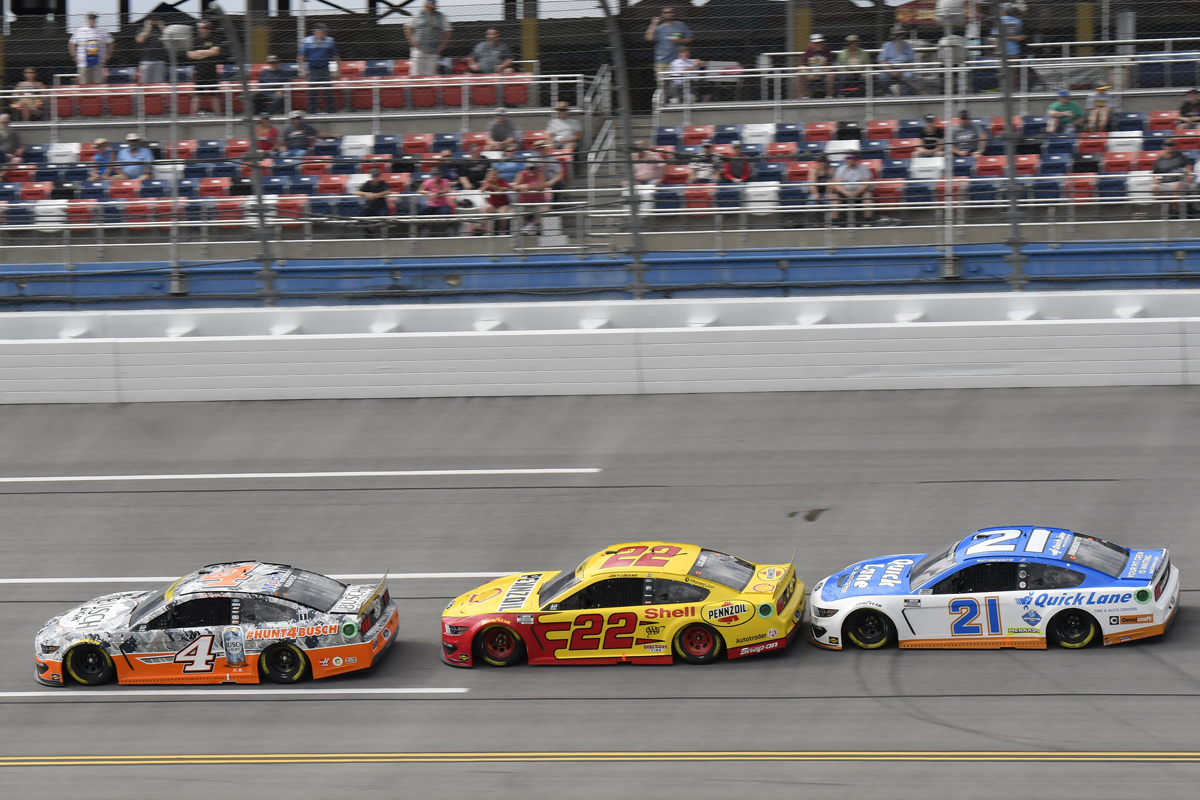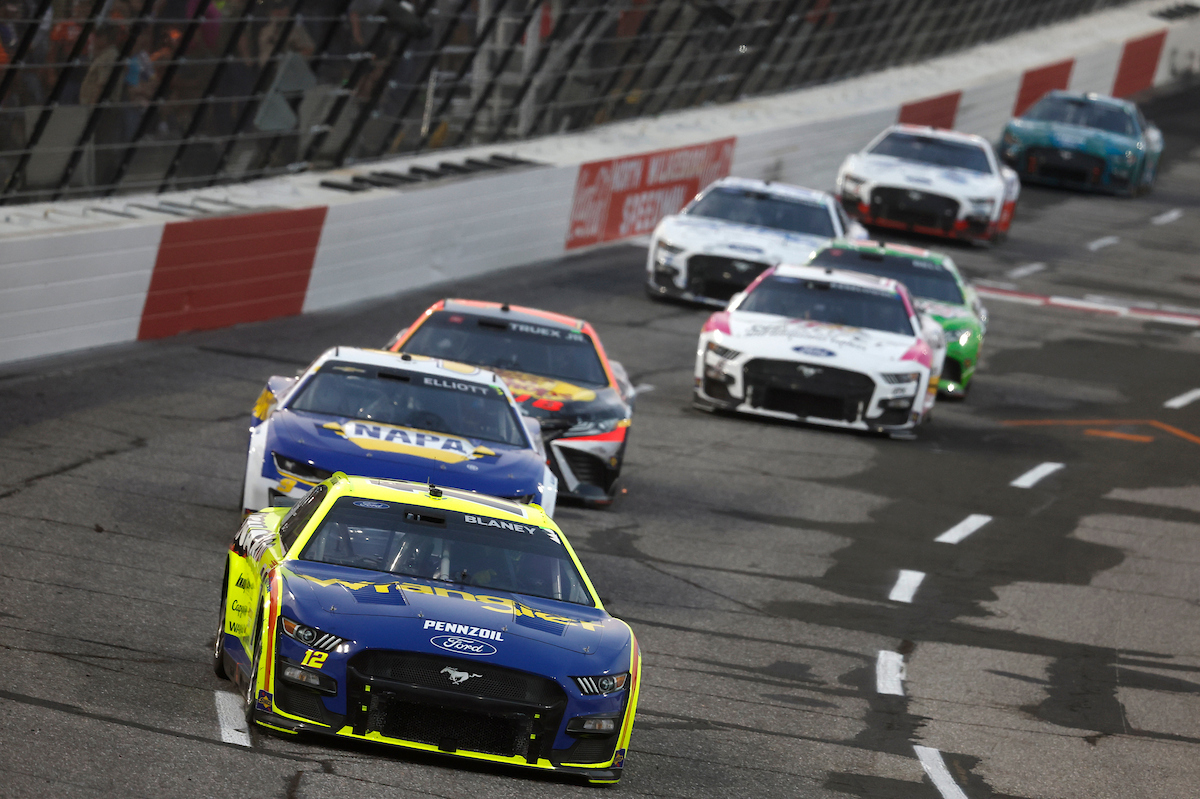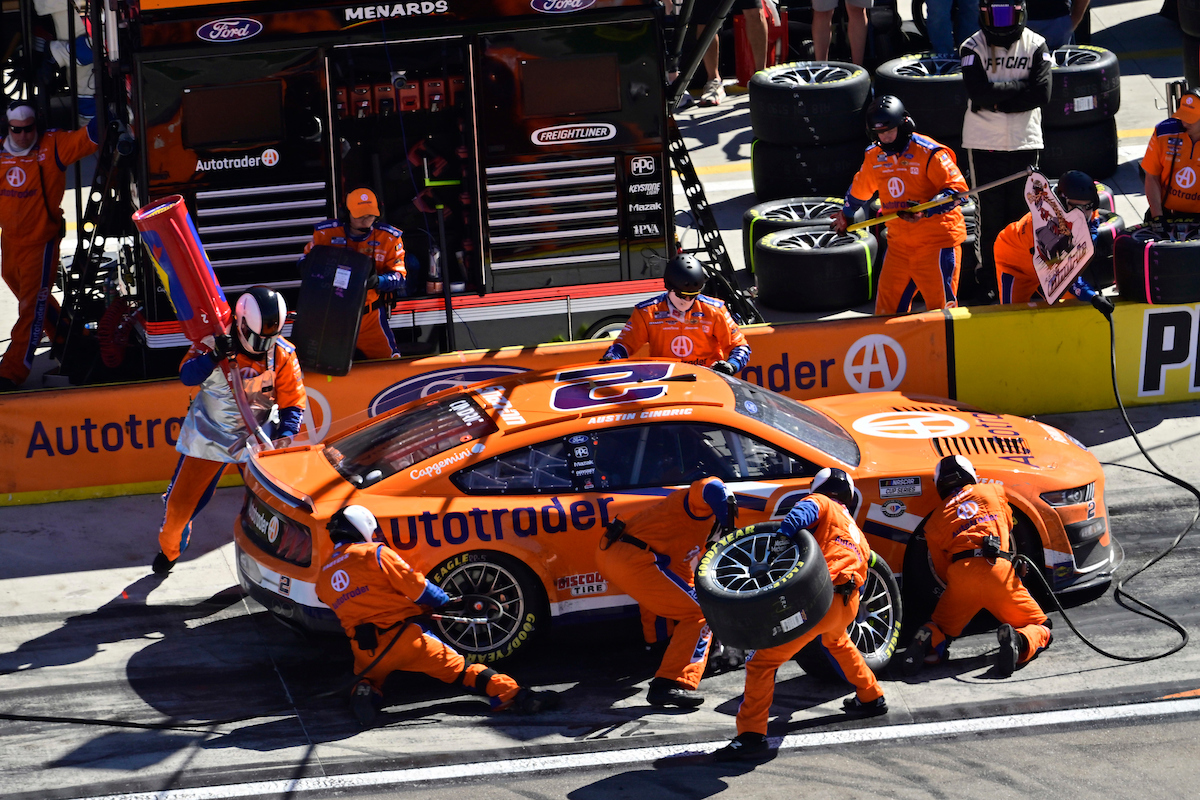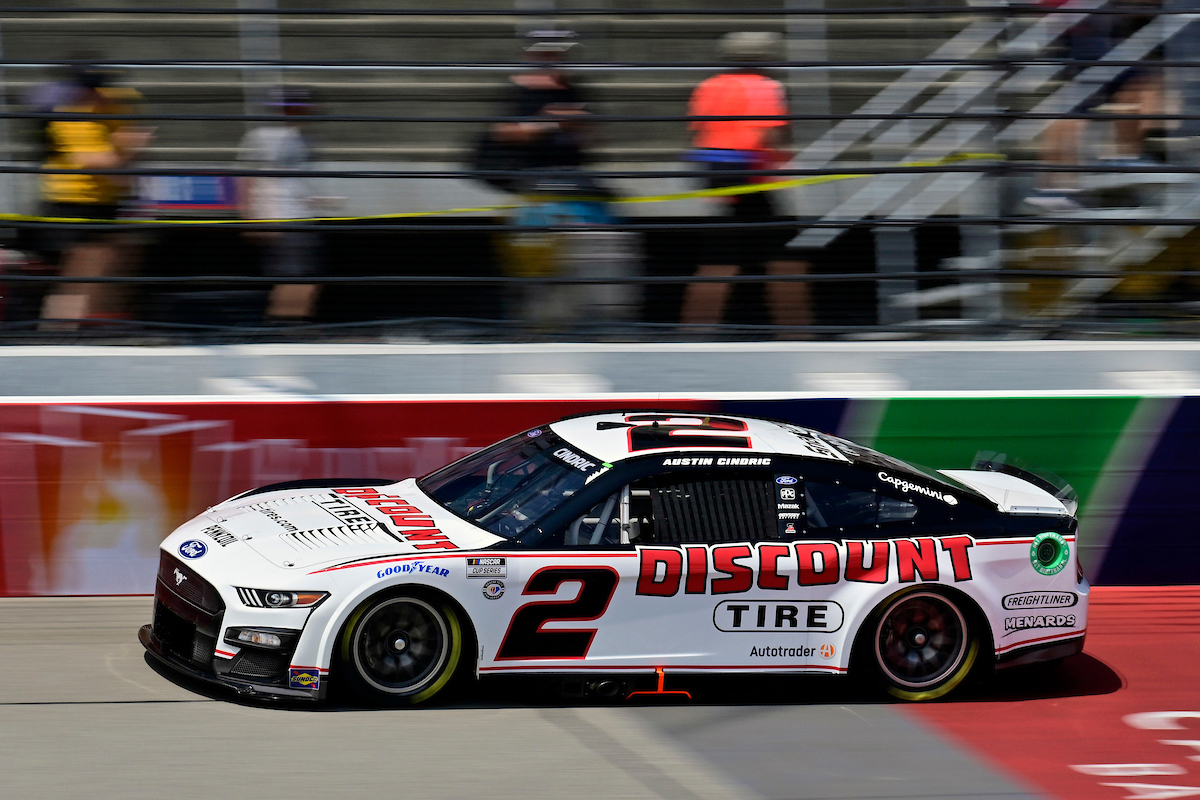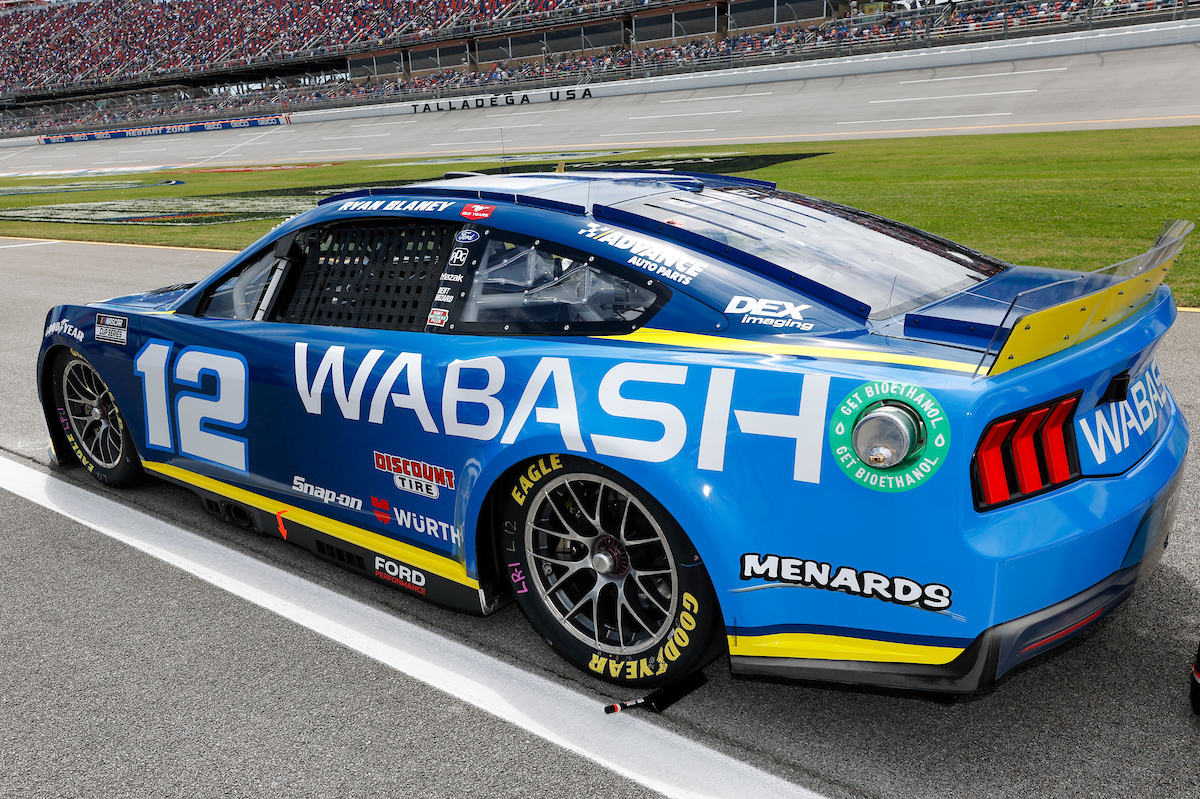Why Do NASCARs Have Fake Headlights?
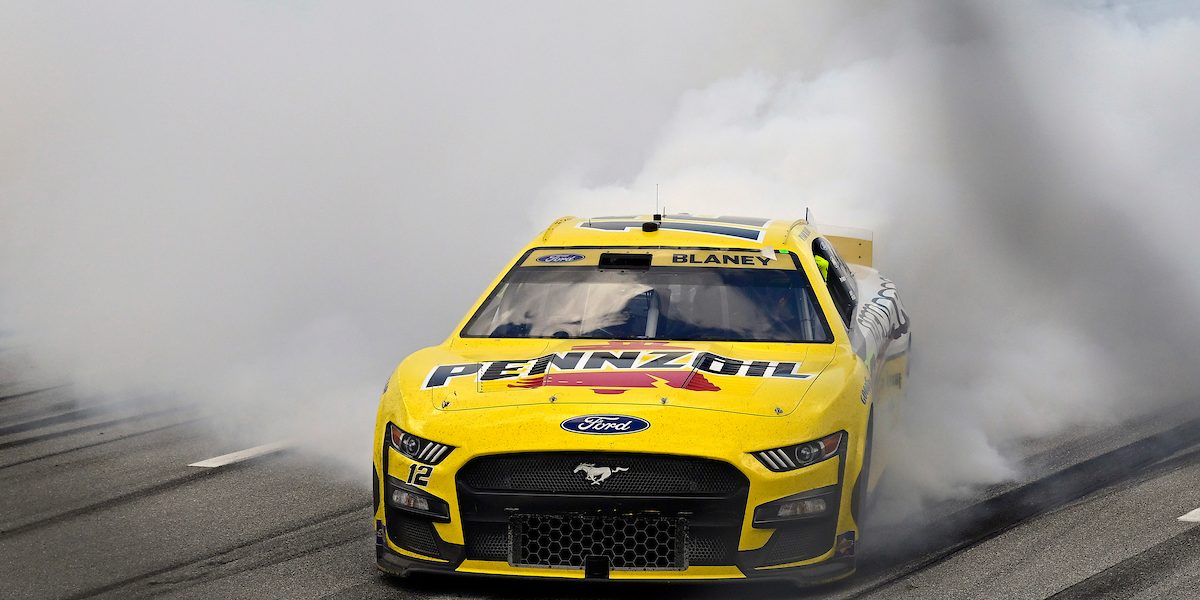
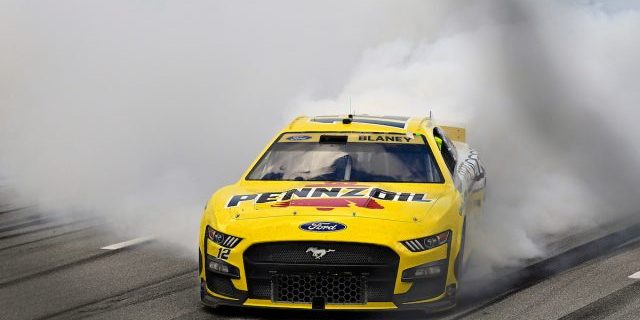
NASCAR vehicles, known for their high-speed races and iconic designs, feature a notable characteristic: fake headlights. These decals mimic the appearance of standard headlights, but why are they included on cars built solely for racing? The primary reason stems from the origins of NASCAR, where the sport’s ethos was to race cars that appeared stock, meaning they looked like everyday street-legal vehicles. This visual cue helps maintain a connection to the series’ roots, despite the evolution of race cars into highly specialized machines.
Adding to the aesthetic purpose, these decals also serve a practical function during televised races and events. Fake headlights, along with other decals like taillights and grilles, assist in making cars more recognizable and relatable to viewers. This familiarity enhances the spectator experience, allowing for easy identification of vehicles on the track, especially from the aerial and distant camera shots common in race broadcasts.
On a technical level, the absence of real headlights brings several benefits. Real headlights would introduce unnecessary weight and the potential for breakage, which could lead to on-track hazards like shattered glass. Safety and performance are paramount in NASCAR, and eliminating real headlights reduces these risks while also streamlining the vehicles’ design for better aerodynamics. These non-functional headlight decals represent a blend of tradition, viewer engagement, and engineering optimization, vital to the fabric of NASCAR racing.
Table of Contents
History and Evolution of NASCAR Design
NASCAR’s evolution in design has been marked by a shift from functional components to those that serve as branding and advertising tools in a sport deeply intertwined with consumer culture.
From Real to Decorative: The Transformation
Initially, NASCAR cars were stock cars, essentially unmodified vehicles one could purchase from a dealer. Cars like the Ford Fairlane and Chevrolet Bel Air raced in the 1950s and 60s closely resembled production cars, equipped with functional headlights necessary for visibility during racing. However, as the sport advanced, regulations standardized car design, focusing on safety and performance rather than street legality. Manufacturers removed real, glass-covered headlights, replacing them with decals. This was a safety measure, as broken glass on the track from actual headlights could have dangerous consequences, including tire punctures.
Impact of Advertising on Car Aesthetics
Manufacturers such as Chevy, Ford, Toyota, and Dodge leverage NASCAR vehicles as high-speed billboards to advertise their brands and showcase product lines. The decal headlights, while non-functional, contribute to making NASCAR cars resemble their production counterparts. This aesthetic similarity upholds the industry adage, “Win on Sunday, sell on Monday,” connecting the success of a vehicle on the track to consumer sales. By promoting their cars in NASCAR, manufacturers aim to influence public perception and inspire confidence in their vehicles’ capabilities and design, despite the cars being heavily modified for competition.
The Role of Fake Headlights in NASCAR
NASCAR vehicles feature fake headlights for reasons pivotal to both safety and performance. While they may appear visually similar to road car headlights, these decals serve specific functions inherent to racing conditions.
Safety Considerations and Aerodynamics
Decals are used for what would be the headlights and taillights in regular vehicles, turning a vulnerability into a safety feature. Glass components like real headlights could shatter during a crash, posing a hazardous condition on the track. In contrast, stickers prevent the scattering of debris, enhancing safety for drivers and spectators alike.
From an aerodynamics standpoint, the absence of actual light assemblies can improve airflow over the car’s surface. This is crucial, as NASCAR races depend highly on the ability to cut through the air efficiently, and any disruption can impact the car’s performance.
Weight Reduction and Performance Enhancement
In the quest for maximum performance, NASCAR teams focus keenly on reducing weight. Without the physical headlight and taillight units, cars shed unnecessary mass, albeit modestly, contributing to marginal gains in speed and handling. Performance in motorsport often hinges on such minute details, making the lighter sticker alternative an essential part of the vehicle’s design.
The Sticker Solution
The solution of using decals in place of headlights and brake lights offers more than just weight savings and aerodynamics. It also provides a level of brand recognition and aesthetic appeal intended to resonate with fans and consumers. The familiar look of headlights and taillights, even as fake adornments, helps maintain the visual connection between NASCAR vehicles and their street-legal counterparts.
Technological Advances in NASCAR
NASCAR’s continuous innovation in vehicle technology not only enhances performance but also ensures the safety and appeal of the sport. These advancements include transformations in car bodies and systems, as well as adaptations in racing conditions like track illumination.
Innovations in Car Bodies and Systems
Car Bodies: Modern NASCAR stock cars have evolved to become more aerodynamic, using advanced materials for both strength and efficiency. The bodywork is designed to influence the car’s traction and downforce, which are crucial for maintaining stability and speed, especially during high-pressure race situations.
- Tires: They are continuously developed to provide the necessary grip, balancing the car’s horsepower with control during tight turns.
- Systems: Each vehicle features sophisticated systems engineered for precise performance, including fuel delivery and sophisticated suspensions that adjust to the demands of various tracks.
The Future of Racetrack Illumination
Lighting: As races often extend into the evening, NASCAR tracks are equipped with high-intensity lighting systems to ensure visibility, negating the need for functioning headlights on cars. The focus is on track lighting that can adapt to different weather conditions and times of day.
- Night Races: These events test the limits of lighting technology, with the goal of maintaining consistent conditions akin to daytime races. It’s an area of continuous development, seeking to improve the experience for drivers, spectators, and broadcast audiences alike.
NASCAR’s Influence Beyond the Track
NASCAR’s significance extends past the racing circuits, influencing consumer behavior and permeating popular culture. Through strategic marketing and driver endorsements, NASCAR has positioned itself as both a driver of sales and an entertainment staple.
Cross-Market Impact
NASCAR racing showcases a fleet of race cars that resemble their street-legal counterparts, strengthening the connection between the vehicles seen on track and those available in dealerships. This relationship adheres to the adage “Win on Sunday, sell on Monday,” which suggests that the performance of cars in the NASCAR Cup Series and Xfinity Series races can directly influence consumer purchasing decisions. Drivers, recognized as popular sports figures, often enter partnerships with car manufacturers to enhance this marketing effect, encouraging fans to buy models akin to the race cars they cheer on.
- Consumer Engagement: By engaging with fans through the sport, sponsors can drive their brand recognition and loyalty.
- Sales Influence: Success in racetracks can incentivize fans to purchase models linked to their favorite NASCAR drivers, who are seen as symbols of the sport’s excitement and appeal.
NASCAR’s Role in Popular Culture and Merchandise
NASCAR has successfully woven itself into the fabric of American entertainment, reaching audiences beyond the die-hard racing fans. This includes integration with movies, music, and video games, further solidifying its status as a popular cultural phenomenon. The use of race car replicas and related merchandise supports the sport’s visibility and enables fans to showcase their alliance with specific drivers or teams.
- Cultural Presence: NASCAR’s role in various forms of media reinforces its status as an iconic element of sports entertainment.
- Merchandising: A diverse range of products, from apparel to model cars, caters to the tastes of different consumers, enhancing NASCAR’s brand and sponsor exposure.
By promoting recognizable drivers and showcasing cars that mirror consumer-available vehicles, NASCAR strengthens its presence both in the racing world and the larger market, affirming its role as more than just a sports organization.
Why Do NASCARs Have Fake Headlights? – Frequently Asked Questions
The design of NASCAR vehicles, while closely resembling street cars, incorporates features tailored to high-performance racing. These features often raise questions regarding their purpose and functionality.
What is the purpose of the decals resembling headlights on NASCAR vehicles?
The decals on NASCAR cars serve the dual purpose of making the vehicles resemble their street-legal counterparts and branding. Though they offer no illumination, these decals maintain the stock car aesthetic critical for fan recognition and manufacturer representation.
How are NASCAR vehicles different from street-legal cars in terms of exterior features?
Apart from the obvious absence of functional headlights, NASCAR vehicles differ in their aerodynamic designs, reinforced structures, and the inclusion of advanced safety features not typically found in street-legal cars. Their exterior is meticulously engineered for performance at high speeds.
Are the modifications to NASCAR cars, like omitting real headlights, for performance reasons?
Yes, modifications like the replacement of real headlights with decals are performance-driven. This eliminates unnecessary weight and the risk of debris from shattered glass, optimizing the vehicle for high-speed racing.
What racing safety features are absent in NASCAR vehicles compared to regular cars?
Regular cars often come equipped with advanced driving assistance systems and passive safety features like multiple airbags, which are not present in NASCAR vehicles. Instead, NASCAR focuses on strong roll cages, specialized racing seats, and harnesses to protect drivers during high-impact collisions.
How do the aesthetics of NASCAR cars serve its branding and sponsorship role?
The aesthetics of NASCAR cars are tailored to maximize branding opportunities. The cars’ liveries are designed to display sponsor logos and colors prominently, making them visible and recognizable at high speeds to fans and viewers, which is an integral part of NASCAR’s commercial model.
Why are certain practical car elements like doors and real headlights excluded in NASCAR design?
Practical elements like operable doors and real headlights are excluded in NASCAR design to enhance safety and performance. Doors are sealed to reinforce the car’s structure, and real headlights are replaced with decals to reduce weight and prevent potential hazards from broken glass.






